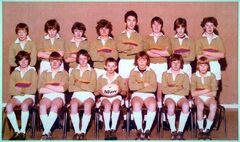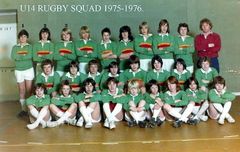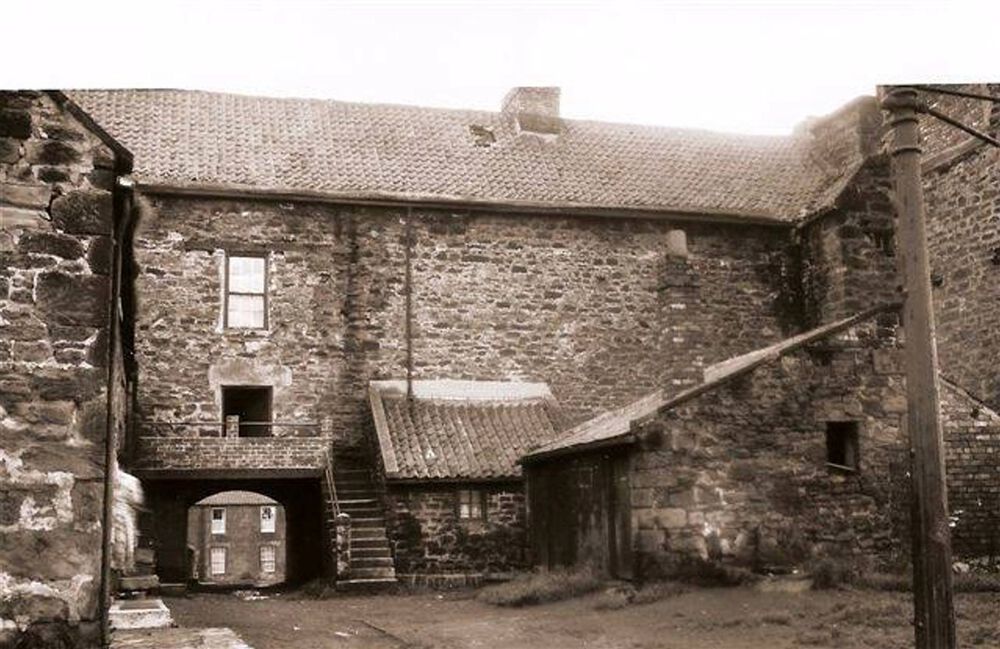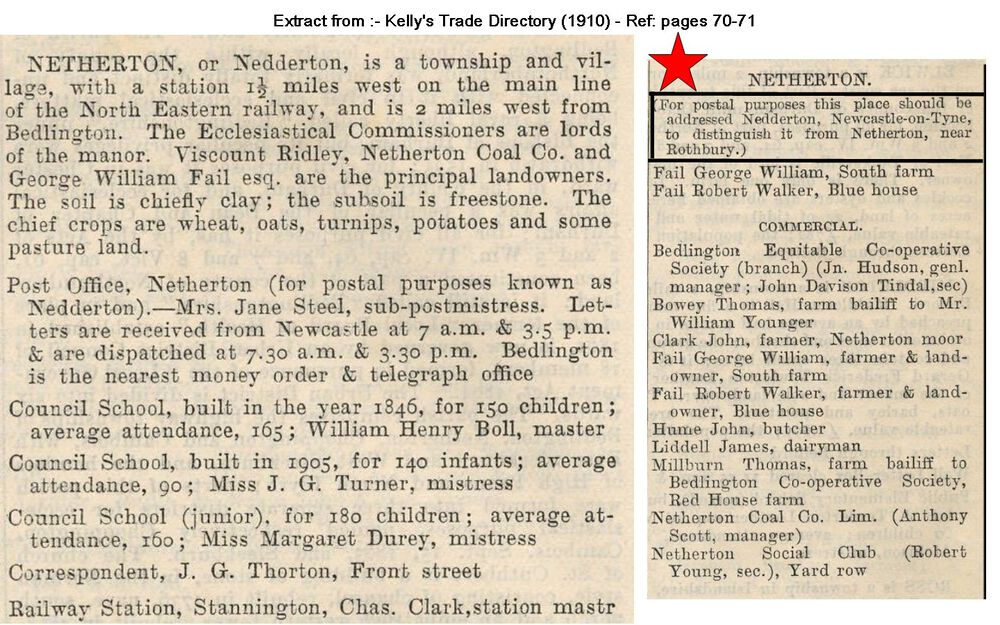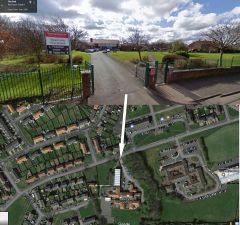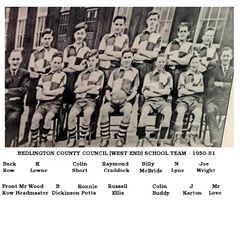
Alan Edgar (Eggy1948)
Supporting Members-
Posts
6,840 -
Joined
-
Last visited
-
Days Won
343
Content Type
Forums
Gallery
Events
Shop
News
Audio Archive
Timeline
Everything posted by Alan Edgar (Eggy1948)
-

Bedlingtonshire Community High School
Alan Edgar (Eggy1948) commented on Alan Edgar (Eggy1948)'s gallery album in Historic Bedlington
I just do what's available each day - normally on what notifications via email is received from Facebook groups and this community group. I just hope we get more members interested in keeping the histiry of the town recorded. The albums have been created over the last 5 years. I do keep copies of the photos that others posted online on my Desk Top PC's as it makes access easier. None of my family were born and bred in Bedlington so it's down to members of this group to carry on updating the albums. We rely on the youngins - so over to you @lilbill15 I should add that if I was younger, and fitter, I wouldn't be in the house every night doing this - I would be out on the town -

1993 - Nicola Downey.jpg
Alan Edgar (Eggy1948) commented on Alan Edgar (Eggy1948)'s gallery image in Historic Bedlington
-
From the album: Bedlingtonshire Community High School
-
There are quite a few photos of Doctor Terrace and nearly all are posted in the album - Doctor Pit and Rows. The albums are held in the Gallery section and there are a number of albums on Netherton and an album for each of the schools, old and current, in the Historic Bedlington section. This is another photo and info from one of Evan Martin's books :- Have to go now but I will add some some info showing Then & Now for Doctor Terrace. This is a direct link to the Doctor Pit and Rows album. If you select a photo thatis displayed then there is normally additional photos and info added :-
-
@Donna Clark - including the couple of photos that @Vic Patterson posted above of the Old Hall there are just a few of the building and some info = comments by local Bedlington Facebook group, Bygone Bedlington, members - but I haven't seen any official documents on the Old Hall. This is a 'Then & Now' (Google street view 2020). When the Old Hall was demolished, late 1950's, the new building, Council Offices, included a section, left side, as you look at the building, to 'resemble' the Peel Tower that was part of the Old Hall. This comment by Brian jenkinson - Bygone Bedlington Facebook Group :- Brian Jenkinson The "square bit" on the left started life as a pele tower which predates the hall. The current square structure is "a nod" to its history but is contemporary with the rest of the building (opened in 1961) and not medieval! Some more photos, but no additional info from the members who posted the photos of the old building :- These next photos are through the archway :- This info is from the book - The People's History, Memories of Bedlingtonshire and Beyond - by a local man, Evan Martin and t info was with the photo that Vic posted above :-
-
@Donna Clark - I'm sure you will be aware that the three places you mention - Old hall, Doctor Terrace & Clifton Row (Netherton Colliery) no longer exist. This is an old map 1896 showing the area but I have excluded Netherton as to fit it all in you wouldn't be able to read the names on the map. We will add some old maps, later, showing Netherton Colliery & Clifton row. You will see on the current Google map added to the 1896 map the name netherton does not appear, just the name Nedderton. Nedderton used to be called Netherton and the colliery area, where the colliery houses where, was always know as Netherton Colliery. There was another village called Netherton, near Rothbury, and the post for the two vilages used to get mixed up so Netherton, Bedlington changed it's name to Nedderton but the colliery area retained the name Netherton Colliery.
-
-
@Donna Clark - welcome to the group Donna. There are photos of Doctor Terrace, Bedlington ( know locally as the Doctor Pit Raa's or old pit raa's (Rows)), the Old Hall, Bedlington. and possibly a couple of Clifton Row, Netherton Colliery. @Canny lass will probably be able to tell you when Clifton Row demolished. I will have a look through the albums in the Gallery and and either add them in a comment within this topic or add a link to the gallery album that holds the photos of Netherton Colliery and the Doctor Pit Rows. There are a couple photos of the Old hall but I don't think they are in any of the albums but I have copies of them and I will add them for you to see. I have converted your 'bmp' file to a jpg file which will save any member having to Download the file to see it. It will be tomorrow before I have a good look through the albums but I will get back to you🙂
-
@James - two names, No 8 & 9, from members of the Ellis family :- Does your photoshopping software allow you to add the names to the photo? My old software - Microsoft Digital Image Pro 10 allows me to create an image with space added for text to be added. So any additions or corrections I just have to edit the image. Unfortunately my software is nearly as old as me and only runs on my old Windows Vista PC - it wont load on Windows 7,8 or 10. When my Windows Vista PC finally gives up the ghost I will be relying on others to add text🙂
-
@John Fox (foxy) Never mind that one day of the year - celebrate the other 364 (365 on leap year) days and rest on that one day. If Sweden can make CL + OH ecstatic (Sweden 1 Slovakia 0 last Friday) then surely England will win tonight - whilst we are washing up
-

Stead Lane Primary School - The Oval
Alan Edgar (Eggy1948) commented on Alan Edgar (Eggy1948)'s gallery album in Historic Bedlington
-
-
-
A number of local teams have played at the Welfare Park. This album is to hold any team photos of any team that played there in the year the photo was taken.
-
Ooops - another senior moment - Valerie it is.
-
Remembered it - Stead Lane Primary School - The Oval. Only one class photo has been posted on any of the Bedlington groups for this school. My sister, Anne, was at the school, 1959 to 1962, before going to Barrington CP for three years. No 25 is Joy Rainbow.
-
1. What are the six accepted colours of the Bedlington Terrier breed? Answer = blue, sandy, liver, blue and tan, sandy and tan, and liver and tan. 2. There can be no doubt that a Bedlington Terrier exists. What about a Bedlington Whippet – fact or fiction? Answer = Yes 3. When did Bedlington railway station open? Answer = 3rd August 1850 4. What was the motto of Bedlington Grammar School? Answer = Semper Sursum – To the hills we lift our eyes. Strength and majesty and beauty. Towering upward to the skies. Calling youth to lofty purpose. Bid us ever higher rise. Music and words by Edna Humphrey (BGS school teacher) in 1946. 5. Which of the following buildings is/are Grade II listed?: Trotter Memorial Drinking Fountain, The Old Vicarage, Netherton Blue House Farmhouse Answer = Trotter Memorial Fountain 6. The parish of St. Bede, Bedlington, was established in 1876 under the care of which religious order ? Answer = Catholicism 7. West Bedlington Town Council is a relatively young council. In which year was it created? Answer = April 2009 8. Name the two police officer victims of the Sun Inn murders 15 April 1913? Answer = PC George Mussell & Sergeant Barton 9. What was the name of the somnambulist who, on St Valentine’s Day 1669, climbed a buttress of St Cuthbert’s Church and fell to his death when woken by a passer by? Answer = Watson 10. Who invented the malleable iron rails for which Bedlington Iron Works became renowned?: Michael Longridge, George Stephenson, John Birkenshaw Answer = John Birkinshaw 11. Name the parents of Sir Daniel Gooch? Answer = Mr & Mrs Gooch = John & Anna 12. East Sleekburn and West Sleekburn are recorded as early as 1183 in the Boldon Book. True or false? Answer = I haven’t read it but I will go for TRUE. 13. Bomarsund Coal Mine, which opened in 1905, was part of Bedlington Colliery. True or false? Answer = True = F Pit 14. Bedlington was previously part of the County Palatine of Durham, belonging to the Bishop of Durham, When did Bedlington become part of Northumberland? Answer = 1844 on summer’s efternoon the Bishop tyuk the bus to Bamburugh and handed Bedlington ower to Northumberland. 15. The first ever recorded use of a Penny Black postage stamp was on a letter sent to Bedlington. To whom and at what address in Bedlington was the letter addressed? Answer = Mr Blenkinsop. Ironworks??????????????? 16. Where in Bedlingtonshire can you see the Peter Burke’s sculpture “Janus” (the god of new beginnings) which symbolizes the changing face of Wansbeck? Answer = Dene park, Free Woods. 17. Bedlington Golf Club opened in 1972. Who designed the course? Answer = Frank Penninck. Myself and two friends, once teed off very early one morning – so early it was still dark. We only found two of three balls we teed off with. 18. Excluding its tributary, the River Pont, how long is the River Blyth from source to mouth along the river bank? Answer = 26.8 miles 19. Which of the following services is NOT the responsibility of West Bedlington Town Council?: Bus Shelters, Children’s play areas, Waste and recycling Answer = Waste & recycling 20. Bedlington is twinned with which German town? Answer = Shalksmuhle. 21. According to an old song: Hartley Pans for sailors, Bedlington for ……………? Answer = Nailers 22. 1836, Michael Longridge opened his own locomotive works at Bedlington. His first locomotive was built for the Stanhope and Tyne Railway. What was this locomotive called? Answer = Michael Longbridge I’ll bet you didn’t know …. The French king Louis XIV hated washing so much that he only took three baths in his whole life. Answer = I didn’t. 23. Did you know that Canny lass has filled me with a mine of info. To ensure the info can be retrieved I am working on the Eggy Advanced Search Engine = EASE = (Easy) = I know where it is just can’t find it in my memory any more.
-
Afraid not - the surname rainbow does seem to ring a bell, probably from school days - 1950's -60's, but nothing positive coming back🙂.
-
-

Front Street East - for Canny Lass
Alan Edgar (Eggy1948) replied to Alan Edgar (Eggy1948)'s topic in Chat Central
-
-

Bed Council school 1950-51 season named.jpg
Alan Edgar (Eggy1948) commented on Alan Edgar (Eggy1948)'s gallery image in Historic Bedlington


